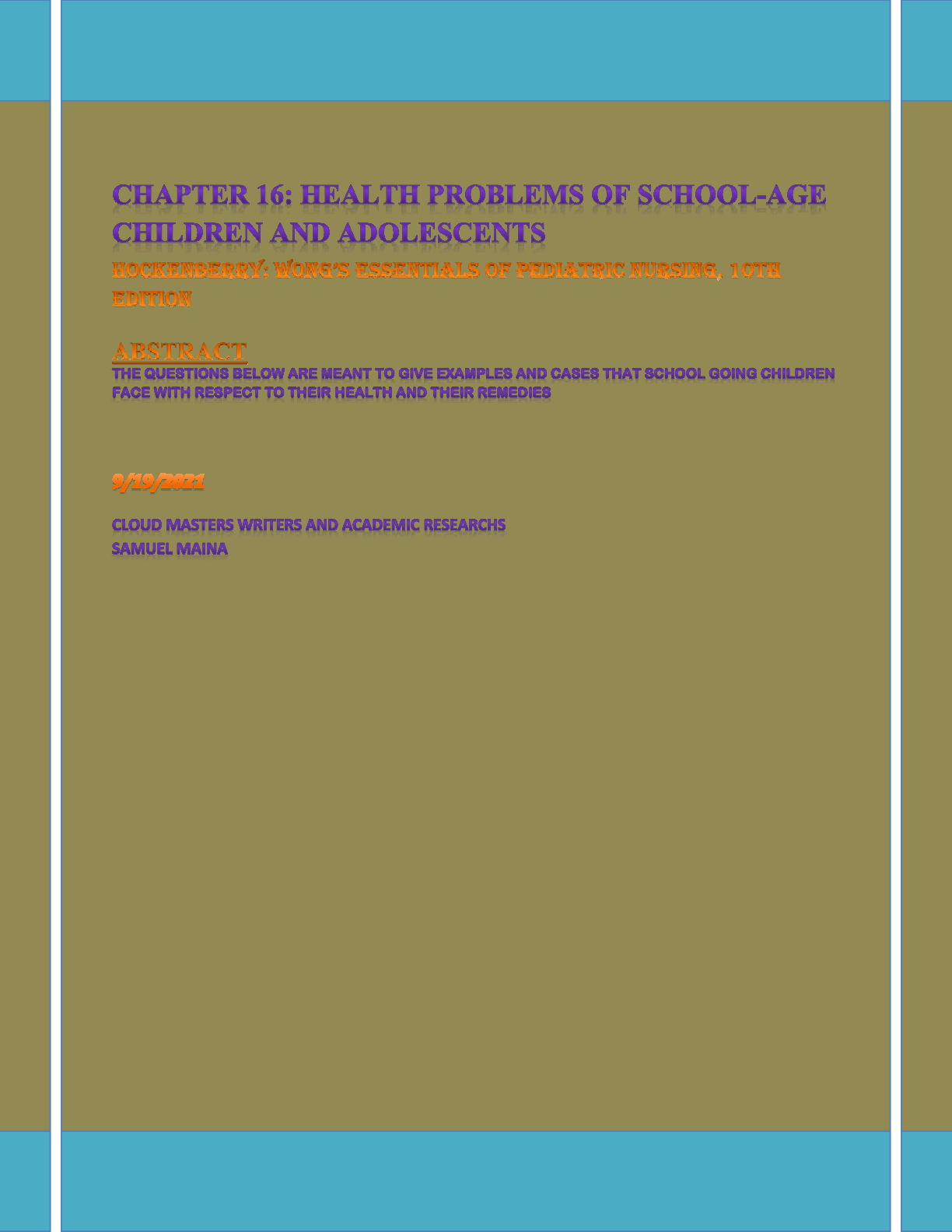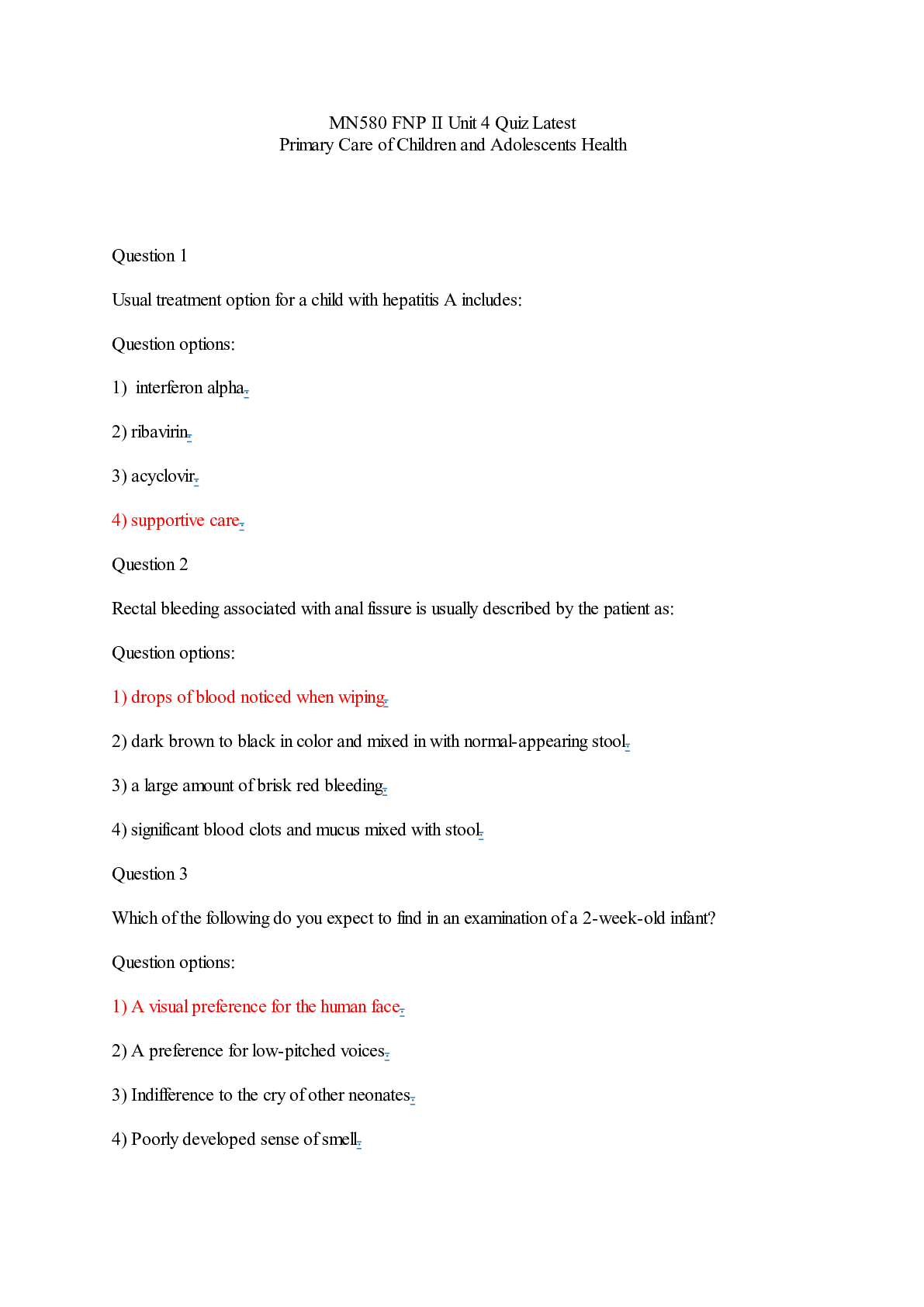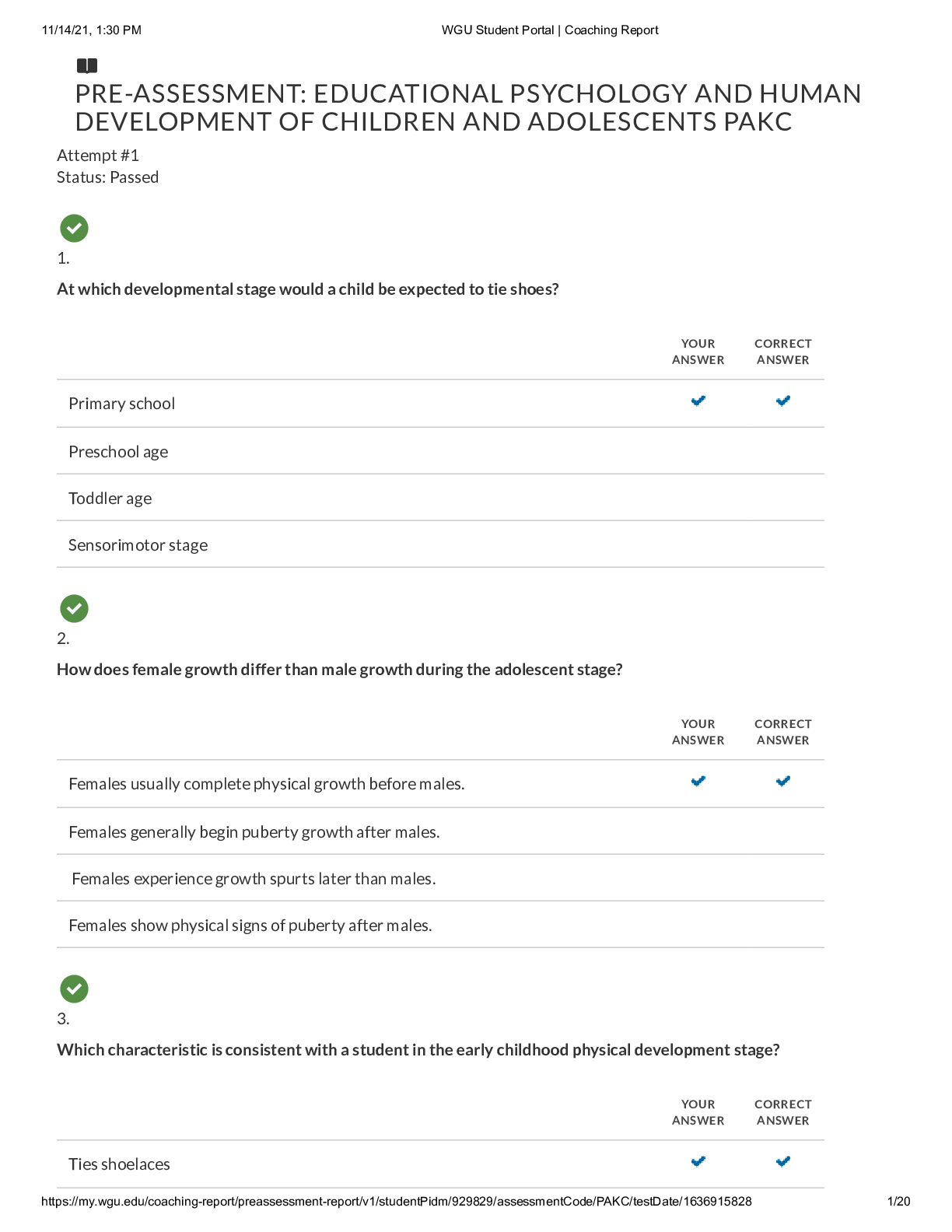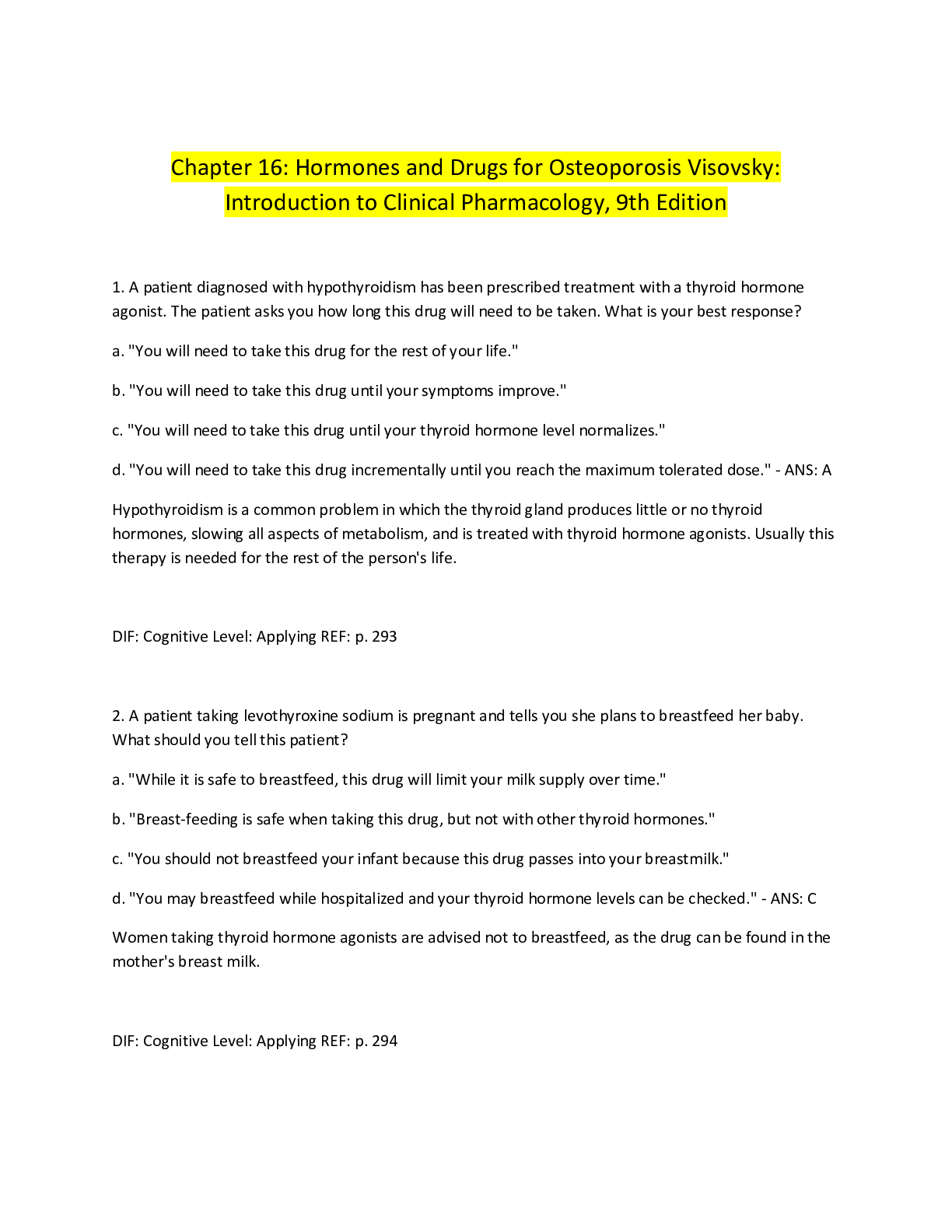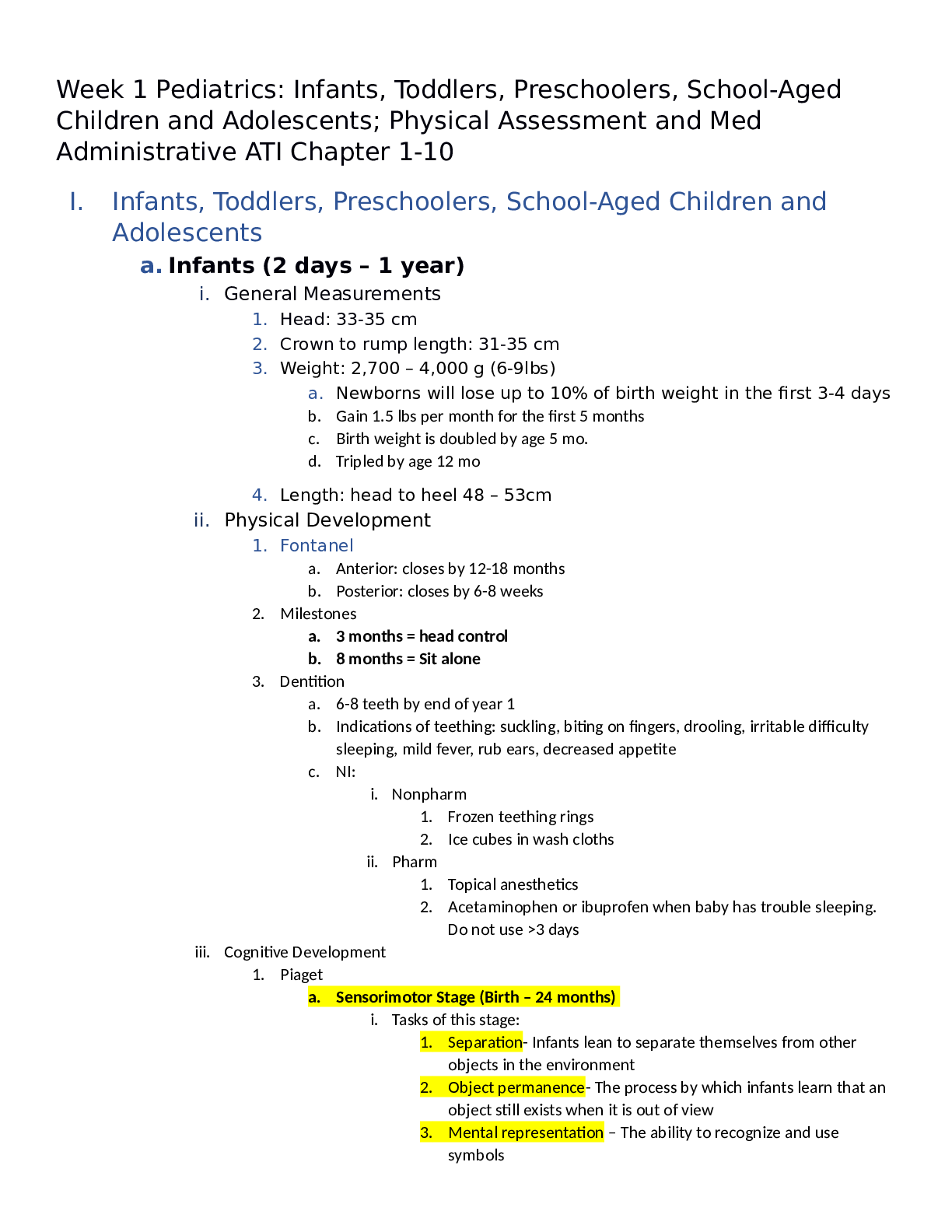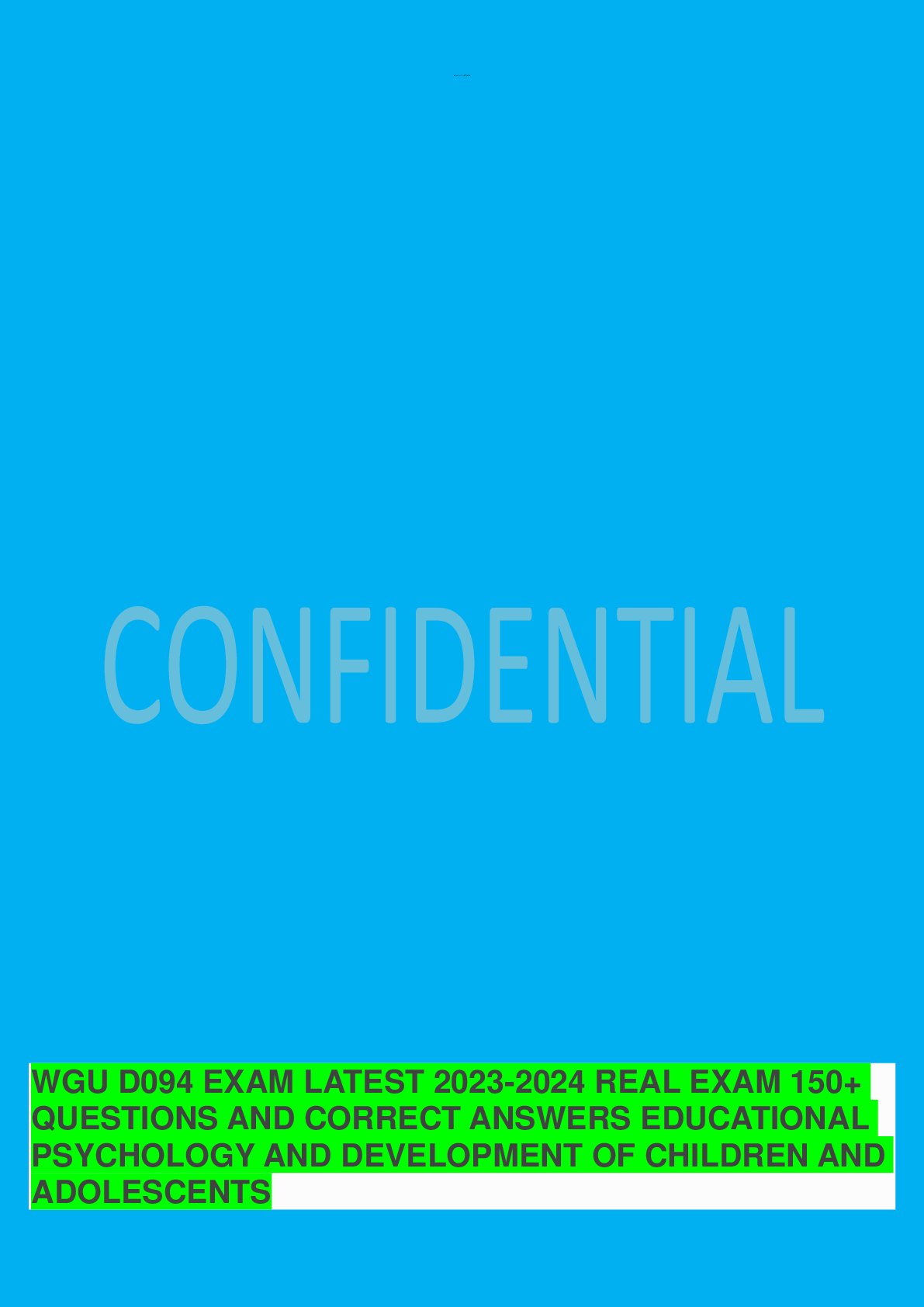Psychology > EXAM > WGU D094 Pre-Assessment V2 (Latest Update) Educational Psychology and Development of Children and Ad (All)
WGU D094 Pre-Assessment V2 (Latest Update) Educational Psychology and Development of Children and Adolescents | Qs & As| 100% Correct Solutions
Document Content and Description Below
1. At which developmental stage would a child be expected to tie shoes? o Primary school 2. How does female growth differ than male growth during the adolescent stage? o Females usually complete ph... ysical growth before males. 3. Which characteristic is consistent with a student in the early childhood physical development stage? o Ties shoelaces 4. Which characteristic is consistent with a student in the middle childhood physical development stage? o Refining of motor coordination 5. According to Piaget, what is an important accomplishment at the preoperational stage? o Thinking symbolically 6. A student understands that a deflated balloon can be inflated with air. According to Piaget, which cognitive level is this student demonstrating? o Concrete operational 7. According to Vygotsky, what should a teacher do to help a student move through the zone of proximal development? o Provide instructional scaffolding 8. Which behavior would Piaget classify as characteristic of the concrete operational cognitive development stage? o Explaining the commutative property in addition 9. According to Vygotsky's theory, which child is experiencing learning from "a more knowledgeable other?" o A child watching parents brush their teeth 10. According to Kohlberg, which behavior is characteristic of the final stage of his moral development theory? • Justifying a moral decision on the basis of self-chosen principles even when there is a conflict with official rules and laws 11. Because of circumstances, an individual seeks medical advice to remove a parent from life support. According to Gilligan, which moral stage of development is represented by this scenario? • Postconventional 12. During which age range does Erikson's industry versus inferiority stage of psychosocial development usually occur? • 5 to 12 years 13. According to Bandura, which factor can affect reproduction? • Physical capabilities 14. According to B. F. Skinner's theory of operant conditioning, what is an example of negative reinforcement? • Removing a restriction if a student pays attention in class 15. What is identified with the babbling stage of the language development process? • Repeating vowel sounds 16. Which action characterizes the holophrastic stage of language development? • Uttering single words 17. A student is able to make a sentence with a subject, verb, and object. Which stage of language development is this student in? • Telegraphic 18. A fifth-grade student is having difficulty listening and retaining information. The teacher notices that the student looks pale and has brittle hair and nails. Which physical barrier is likely affecting this student's learning and performance? • Nutrition 19. A fourth-grade student complains of headaches, stomach pain, and nausea. The teacher notices the student seems anxious and has difficulty focusing. Based on this information, which barrier is likely affecting this student's learning and performance? • Stress 20. A high school teacher notices a sudden drop in a student's grades and a change in the way the student dresses for school. Which developmental barrier is likely affecting this student's performance? • Peer pressure 21. While solving a multistep math problem, a student forgets the second and third steps while implementing the first. During reading, the student often forgets what was at the beginning of the paragraph before reaching the end of a paragraph. Which memory deficit is likely affecting this student's learning and performance? • Working memory 22. A fourth-grade student frequently says sentences that do not make sense, has trouble learning new words, and often repeats phrases when telling a story or answering questions. The teacher notices the student confuses verb tenses and uses "um," "stuff," and "things" when speaking rather than more specific words. Which type of barrier is likely affecting this student's learning? • Language disorder 23. Due to family circumstances, a high-performing student suffers from inadequate sleep. Which learning and performance impact would be consistent with the student in this scenario? • Decreased ability to focus 24. An extremely intelligent middle school student does not complete work, is suspicious of those who want to be friendly, and is very judgmental of others. A teacher hears the student speak about hating the school and refers the student to the guidance counselor for poor self-esteem. How does poor self-esteem affect learning and performance? • It decreases the willingness to take risks. 25. Even in the heat, a somewhat withdrawn student wears long sleeves and pants. As a victim of abuse, this student fears being required to have anything signed by a parent. How does child abuse influence learning and performance? • It increases self-isolation and the fear of reprimand. 26. A second-grade student is argumentative and defiant and engages in passive-aggressive behaviors such as giving a peer a hug or high five that causes pain. The teacher notices the student bullying other students on the playground. In which area of development is this student struggling? • Social-emotional 27. An eight-year-old student diagnosed with cerebral palsy is working at grade level academically but is unable to write, climb a jungle gym, or participate in any extracurricular activities. In which area of development is this student struggling? • Physical 28. A sixth-grade student, who is being bullied, is afraid to go to recess and walk home after school. Which effect on learning and performance might this student experience? • A decrease in self-complacency 29. A fourth-grade student with attention deficit hyperactivity disorder (ADHD) is inattentive, is disruptive, and has difficulty completing assignments. How can the teacher address this student's learning needs? • Give several choices for completing an activity 30. A student in high school is an English learner (EL) who is operating at the formal operational stage of development. Which classroom activity would address this student's learning needs? • Solving hypothetical problems 31. An underweight middle school student is seen negotiating for food from other students. This student regularly falls asleep in class, complains of headaches, and is unfocused and unmotivated. Based on this description, which area of development of this student should be addressed? • Physical needs 32. A student who is oversensitive to stimuli has difficulty following multistep directions, frequently asks for information to be repeated, and is easily distracted from assigned tasks. What are the learning needs of a student with this type of sensory processing disorder? • Reduction of distractions 33. The language and cultural barrier of a middle school-aged English learner (EL) from a socialist country causes the student to struggle in a U.S. history class. The student has difficulty with abstract social science concepts and terminology. Which approach would address the learning needs of this student? • Provide concrete examples to clarify difficult vocabulary and ideas 34. What is a key concept of B. F. Skinner's operant conditioning in behavioral theory? • Good behavior can be encouraged by continual positive reinforcement. 35. What is a key concept of the humanistic theory of learning? • People are innately good. 36. Which key concept is associated with the constructivism theory of learning? • Interactive experiences 37. Which theoretical learning approach aligns to playing trivia games to review class material? • Information processing theory 38. A teacher has a large group of students to assess. The teacher wants to accurately assess the knowledge students have in a fairly short amount of time. Which type of assessment should this teacher use? • Short answer 39. A teacher wants to know how students apply the things they learned over time and in different ways. Which type of assessment should this teacher use? • Portfolio performance 40. A teacher wants to understand students' mastery of a concept and wants some subjectivity in grading. How should the teacher assess in this scenario? • Have students complete a constructed-response question 41. What is one reason a school would use a criterion-referenced reading assessment? • To assess whether students have mastered a particular national reading standard 42. A high school teacher promotes the development of self-efficacy in students based on the social cognitive learning theory. One student, when assigned a history project, exhibits stress, becomes overwhelmed, and verbalizes that the task is too difficult. Which strategy aligns with this scenario? • Modify the project to promote successful completion by the student 43. A teacher wants students to understand how knowledge is processed by teaching metacognitive skills to overcome memory deficits. Which teaching strategy should this teacher use? • Teaching how to use mnemonic devices or acronyms to recall information 44. A teacher, who takes the humanistic approach to learning, personalizes learning environments for students, capitalizing on intrinsic motivation. Which strategy aligns with this scenario? • Providing opportunities to explore with the environment 45. Taking a constructivist approach, a history teacher encourages students to choose an activity that will facilitate an in-depth understanding of how the United States was founded. Which instructional strategy will align with this scenario? • Role-playing 46. A class with some students who have a visual impairment is learning about lizards. Which technique can the teacher use to help these students understand the lesson? • Have the students feel the skin of a lizard 47. A first-grade teacher uses a baseline assessment for letter recognition and comprehension skills. How should the results of this assessment be used to support literacy development? • To identify the skill levels of the students 48. What is an effective strategy for teaching alphabetic knowledge to preschoolers? • Singing songs that emphasize letter names 49. What is a strategy that should be used to support the growth of students who struggle with decoding and comprehension? • Provide scaffolding and support for word identification skills 50. Which strategy should be used to support the growth of English learners (ELs) during writing instruction? • Create graphic organizers for students to arrange their ideas before writing [Show More]
Last updated: 11 months ago
Preview 4 out of 11 pages

Loading document previews ...
Buy this document to get the full access instantly
Instant Download Access after purchase
Buy NowInstant download
We Accept:

Reviews( 0 )
$11.00
Can't find what you want? Try our AI powered Search
Document information
Connected school, study & course
About the document
Uploaded On
Aug 29, 2024
Number of pages
11
Written in
Additional information
This document has been written for:
Uploaded
Aug 29, 2024
Downloads
0
Views
65
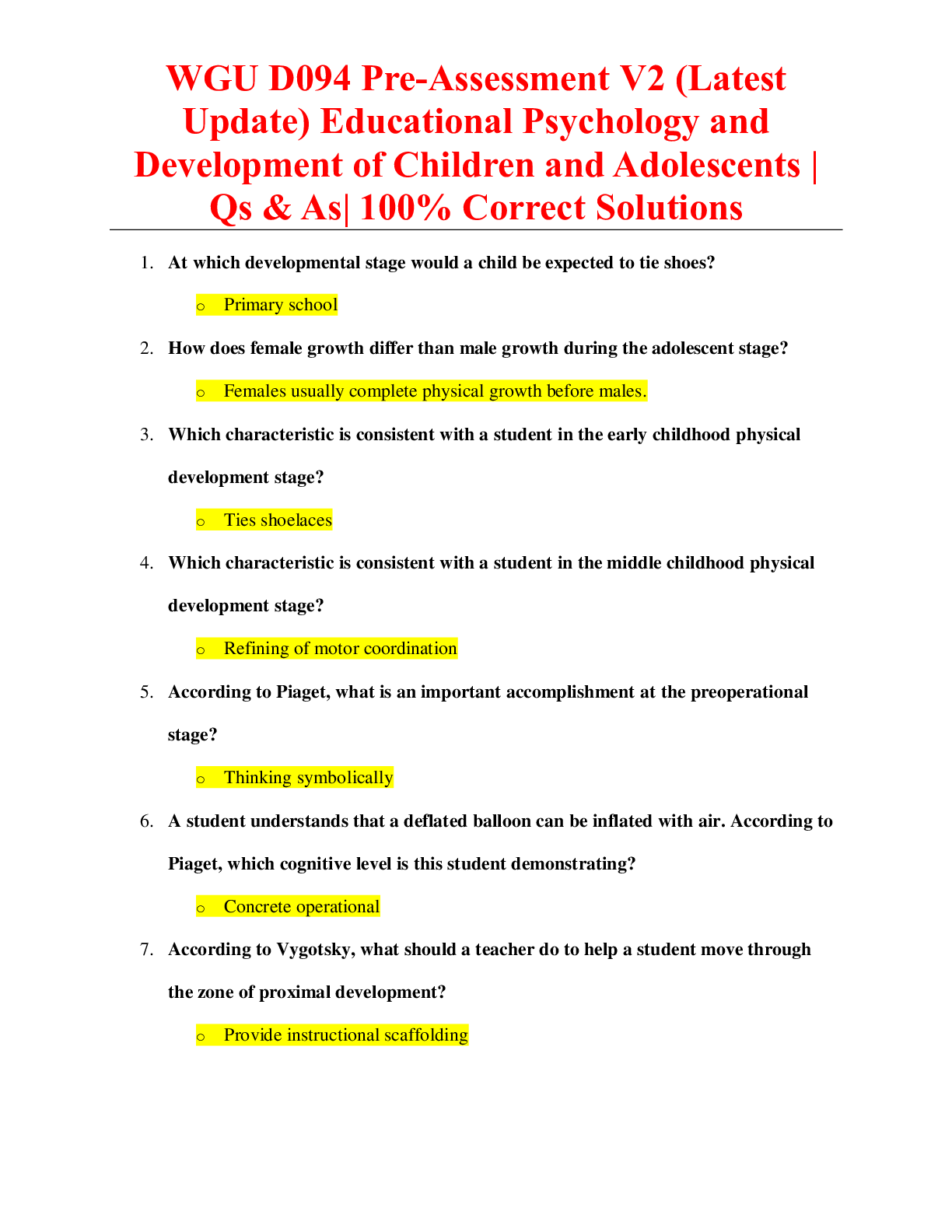

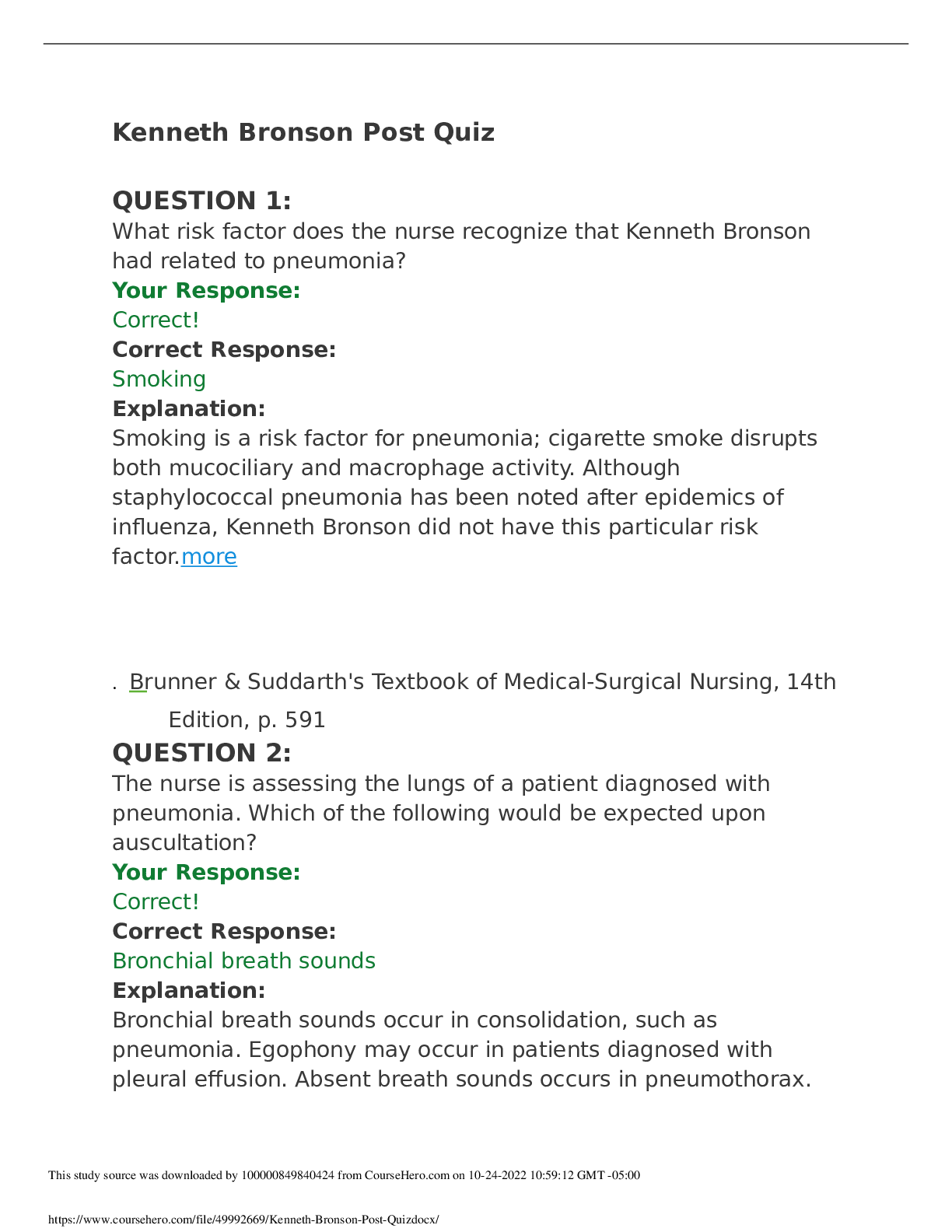



 Questions and Answers 100% VERIFIED.png)
 Questions and Answers 100% correct Solutions.png)







.png)
.png)
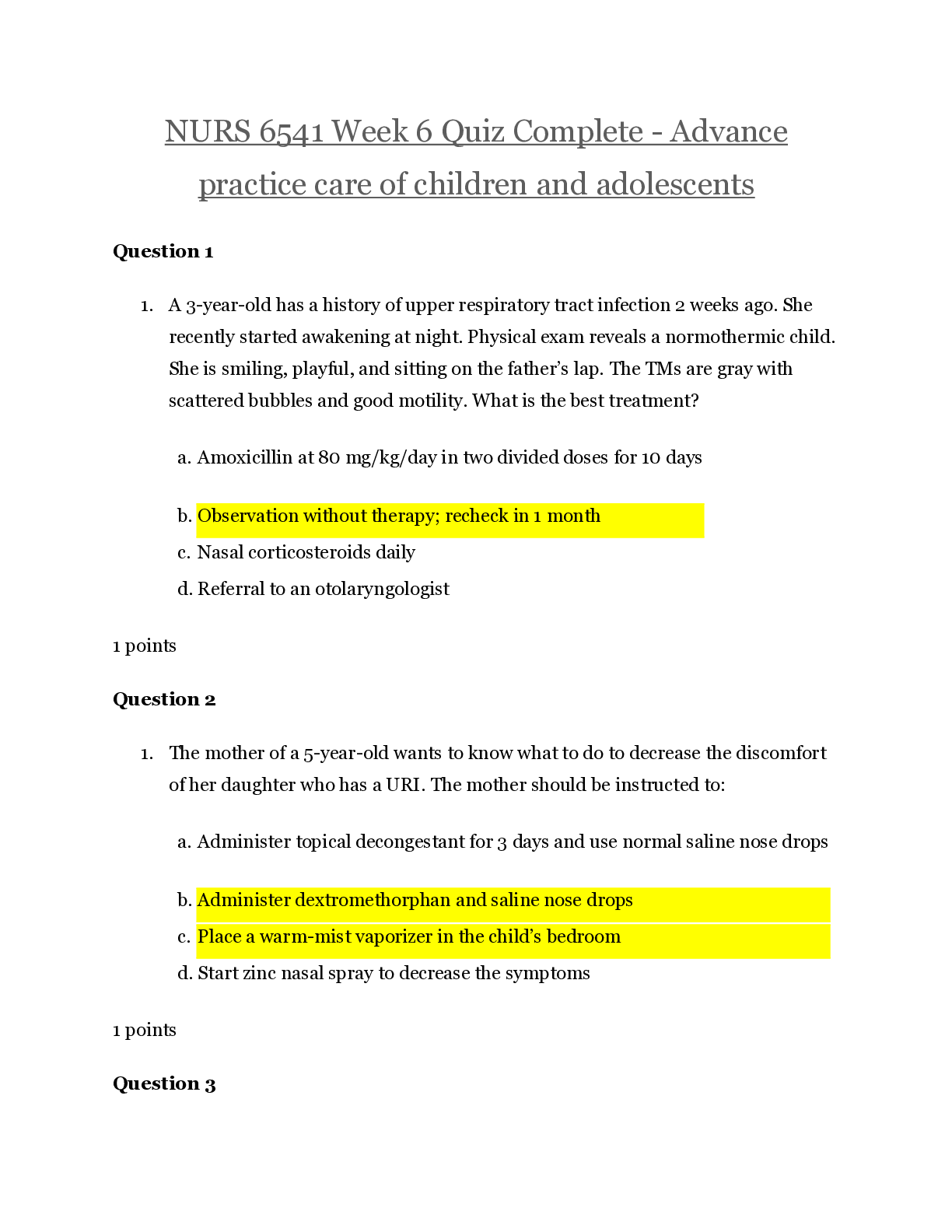
.png)
